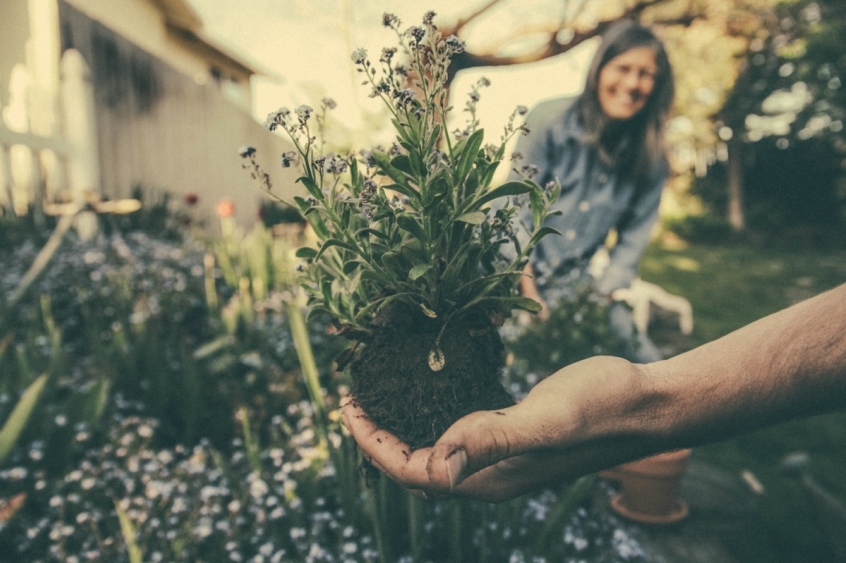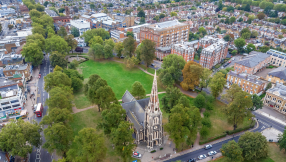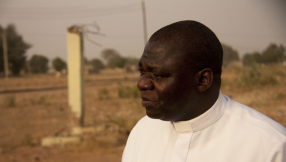
For many enthusiasts, tending flower beds and growing vegetables is a spiritual activity that helps them grow closer to God. It has been this way throughout Christian history, perhaps inspired by the story of the very beginning of humankind in the perfect paradise of Eden.
Then from the earliest days of monasticism, to modern smallholders and homesteaders, faith and working on the land have been deeply associated with one another.
Biblical lessons
Of course for most people in the world, and in the West before the modern era, survival and life itself depended on the practice of horticulture. Everyone except the very wealthy would enrich their diet by cultivating vegetables and fruits in any ground that could be found, and a much larger proportion of the population worked as small farmers. Perhaps this is one reason why the Bible is full of references to and metaphors of plant growth to teach about spiritual life.
The fertility and abundance of good fruit is contrasted with the aridity and famine of a desert throughout. Jesus chose cultivation to illustrate spiritual growth in the parable of the sower; in Psalm 1 those who meditate on scripture are "like trees planted along the riverbank, bearing fruit each season." Gardening therefore brings a deeper understanding of these passages, as well as awe of the beauty of the created world.
Eden
The Creation Story features the first gardeners, Adam and Eve. "I have given you every seed-bearing plant throughout the earth and all the fruit trees for your food," God said, along with the command to subdue or steward the Earth. It was the fall that introduced the back-breaking hard work of agriculture, but our origin story suggests it wasn't meant to be so.
Monastic beginnings
From the earliest days of Christianity, cultivating food was an important part of life, especially in monasticism. The Egyptian cenobites grew plants outside their caves in the third century, and not long after, the cave dweller St Jerome started his education of a peer with: "Hoe your ground, set out cabbages."
St Benedict tended a rose garden that still exists, according to Teresa McLean in 'Medieval English Gardens', and the large and organised monasteries that he inspired featured a variety of gardens for different purposes: growing vegetables, growing herbs for scent, flavour and medicine, and even beautiful flowers for pure enjoyment. Medieval churches would have a small garden or "paradise" set aside for contemplation and prayer.
Living off the land
Monks were of course dependent on the land for food. As industrialisation and the modern age advanced, most people in the West lost touch with these skills and delight of stewarding creation, leaving just the green fingered gardeners to cultivate for pleasure, and farmers to feed us using enormous machinery.
But a remnant have stayed away from cities and still live off the land. Amish and Mennonite communities are the most obvious example, but more recently there has been a surge in interest in homesteading or smallholding, fuelled by a lot of idyllic social media accounts that portray an Eden-like existence. An environmentally movement called permaculture seeks to produce abundant food using labour-saving forests, which has interesting echoes of Paradise itself.
The reality of self-sufficient gardening is more difficult than the fantasy, but still there are many Christians who are choosing a more natural smallholding lifestyle to spend more time with their families, be more resilient to societal upheaval, or do less damage to the environment. Some of them write about the relationship of these choices to their faith.
"The more time I spend in my garden, the more I believe it was no accident the Creator first placed man and woman in the Garden of Eden," wrote the Christian homesteader who publishes the Wholly Holy Living blog. "It was here in the Garden God intended to walk with His children; to spend time with them, developing the covenant relationship and revealing Himself to them.
"It was during a season of personal toil and spiritual warfare God led me back to the garden, and there, He taught me about His character, and drew me back into beautiful fellowship with Himself. It was there in my garden I found peace, rest, and strength for daily trials. Most of all, I learned that God is the Master Gardener, and only He can supply the growth."
Gardening with God
Author Jane Mossendew wrote a series of books about her love of gardening and how it inspires her faith. Each plant she describes is aligned with the liturgical year and the focus of a meditation. Interesting folklore is also discussed. She describes cultivation as if it was a great adventure with her Creator.
"Gardening is not merely a blind sentimental nostalgia for Eden, but rather a positive, energetic and rugged expression of our hope, as inspired by our faith in God," she wrote in a small booklet, 'Gardening for God.' "Every garden is a potential place of prayer."
As an example, for Easter she meditated on the scabious plant, which has pretty blue flowers and is common in gardens. "Christ ransomed us but he continues to cherish us and feed us," she wrote in 'The crown of the year: gardening with God in Eastertide and summer.'
"He is our food and cures the restlessness of our spirits, and, if we will heed and follow him, prevents us from becoming lost sheep. The many florets making one [scabious] flower are symbolic of the Church being the Body of Christ with as its members who are individually pollinated by the Word and Sacraments."
As summer dawns, we are reminded of the spiritual highs of our lives, full of light, warmth, and the fruits of the Spirit. It's a long time until winter, but we know it will come again, with its reflection, grey days and repentance, mirroring the "dark night of the soul". But in these sunnier days we can be awed by the beauty and diversity of flowers, vegetables and trees, and marvel at God's creative genius.
Heather Tomlinson is a freelance journalist. Find her work at www.heathertomlinson.substack.com or on twitter @heathertomli













